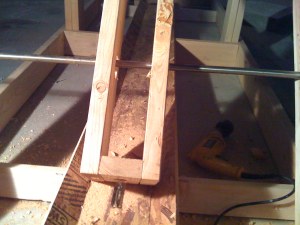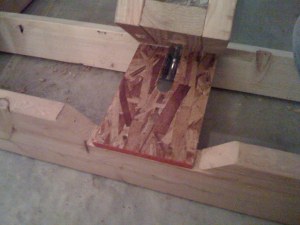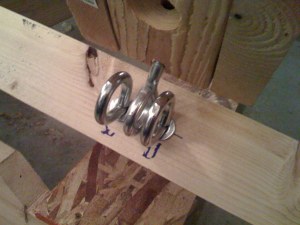We had our first test of the trebuchet with the full 600+ lbs of concrete, and well it a huge… Well just see for yourself! This was the very first toss!
I don’t know how far it went exactly because we were so busy tossing the next pumpkin, but by my estimates the really heavy pumpkins (about 15+ lbs) were going about 100 ft. and the small pumpkins (about 6-8 lbs) were going about 200 ft. That’s good, but it can be better! One thing that was clearly evident in watching the trebuchet is that there is too much friction in the throwing arm and main axle joint.
I have some video that was taken with a real video camera, and once clean it up I will post that.
I would like to thank every one that helped me out on this project, specially my wife for being understanding and listening to the days and day of technobabel.


